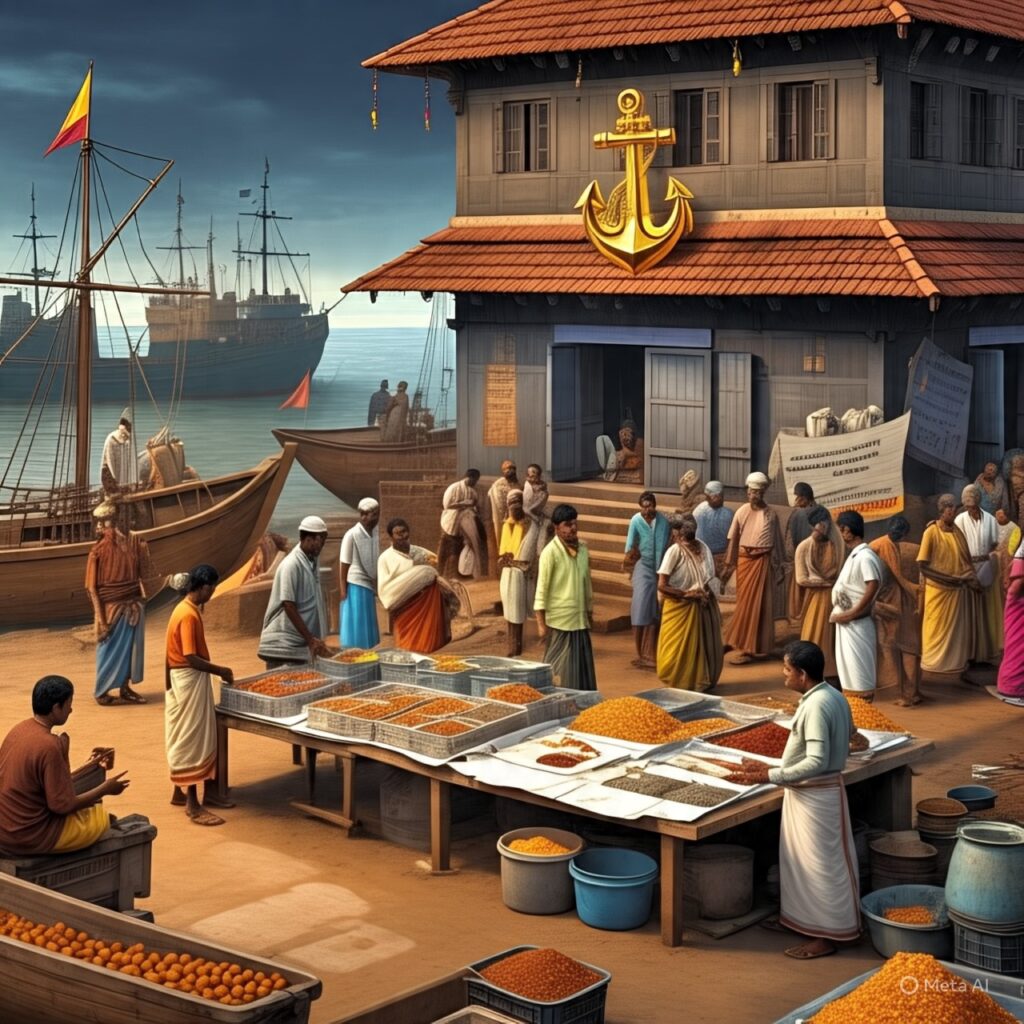Ancient India’s Maritime Legacy: 10 Fascinating Facts About Shipbuilding and Trade
Ancient India’s maritime history is a testament to the country’s rich cultural and economic heritage. From the Indus Valley Civilization to the Chola dynasty, India’s shipbuilding and trade prowess have left an indelible mark on the world. Here are 10 interesting facts that showcase ancient India’s remarkable achievements in shipbuilding and trade.
1. Oldest Dockyard: The Lothal dockyard, dating back to 2500 BCE, is one of the oldest known dockyards in the world. This ancient dockyard, discovered in modern-day Gujarat, India, showcases the advanced maritime capabilities of the Indus Valley Civilization [1].



2. Advanced Shipbuilding: Ancient Indians used durable woods like teak and employed techniques like caulking and treenailing to ensure seaworthiness. These techniques allowed ships to withstand the harsh marine environment and facilitated trade across vast distances [2].
3. Maritime Trade Network: India had extensive trade routes with ancient civilizations like Mesopotamia, Egypt, Southeast Asia, and the Mediterranean, spanning over 4,000 miles of sea routes. These trade routes facilitated the exchange of goods, ideas, and cultures between civilizations [3].

4. Textile Exports: Indian textiles, such as cotton and silk, were highly prized in ancient markets and exported to distant lands. Textile exports accounted for a significant portion of India’s trade, making them a crucial component of the country’s economy [4].

5. Monsoon Winds: Indians utilized monsoon winds for navigation, taking advantage of seasonal wind patterns to facilitate trade and reduce travel time. This understanding of maritime meteorology demonstrates the advanced knowledge of ancient Indian sailors [5].
6. Astronomical Navigation: Ancient Indians used astronomical observations to navigate the seas, charting courses across vast distances with accuracy. By observing the positions of stars and constellations, sailors could determine their direction and location [6].

7. Influence on Southeast Asia: Indian shipbuilding techniques influenced the development of shipbuilding in Southeast Asia, with many Southeast Asian shipbuilding techniques attributed to Indian influence. As Indian merchants and sailors traveled to Southeast Asia, they shared their knowledge of shipbuilding and maritime trade [7].
8. Cultural Exchange: Maritime trade facilitated cultural exchange between India and other civilizations, shaping art, architecture, and traditions. The exchange of ideas and cultures enriched both Indian and foreign societies, leading to the development of new art forms, architectural styles, and cultural practices [8].
9. Guilds and Trade: Maritime trade guilds like Manigramam and Ayyavole played crucial roles in facilitating trade and commerce, regulating trade practices, providing financial services, and facilitating the exchange of goods [9].

10. Naval Power: The Chola dynasty’s naval power was renowned for its advanced shipbuilding techniques and extensive trade networks. The Chola navy played a significant role in expanding the empire’s influence across Southeast Asia and protecting its maritime trade routes [10].
References:
[1] “Indian Maritime History – A Glimpse into Ancient Naval Power and Trade Networks” by The Geostrata
[2] “Advancements of Ancient India’s Vedic Culture” by Stephen Knapp
[3] The Periplus of the Erythraean Sea
[4] “India’s Maritime History: Ancient Ports and Trade Routes” by In Bulletin
[5] The Arthashastra by Kautilya
[6] The Rig Veda and The Mahabharata
[7] “Maritime Networks, Port Trade, and the Western Indian Ocean” by Himanshu Prabha Ray




